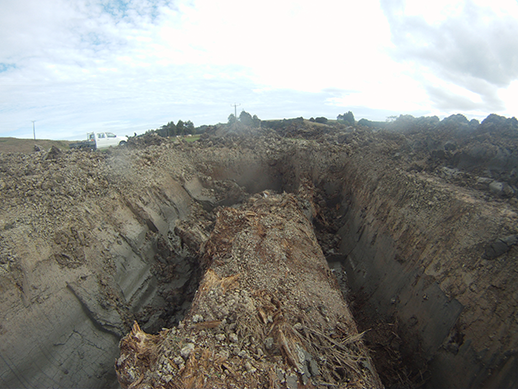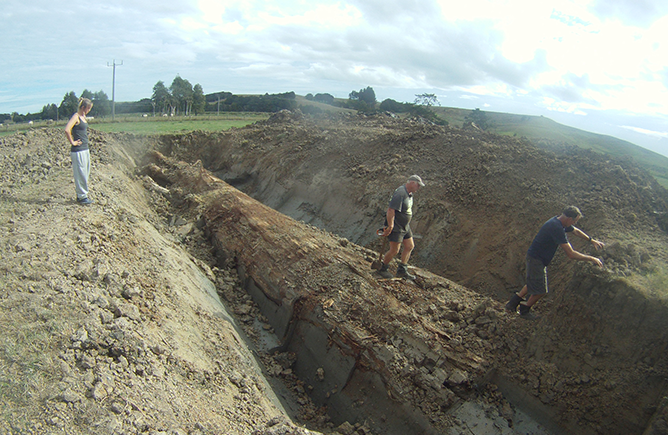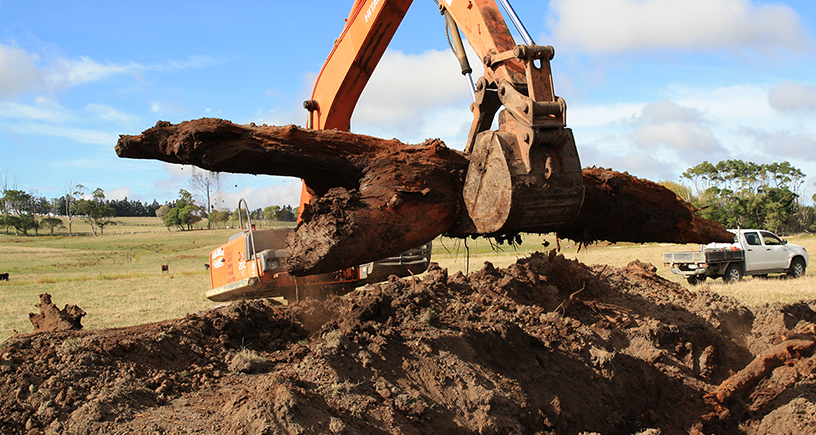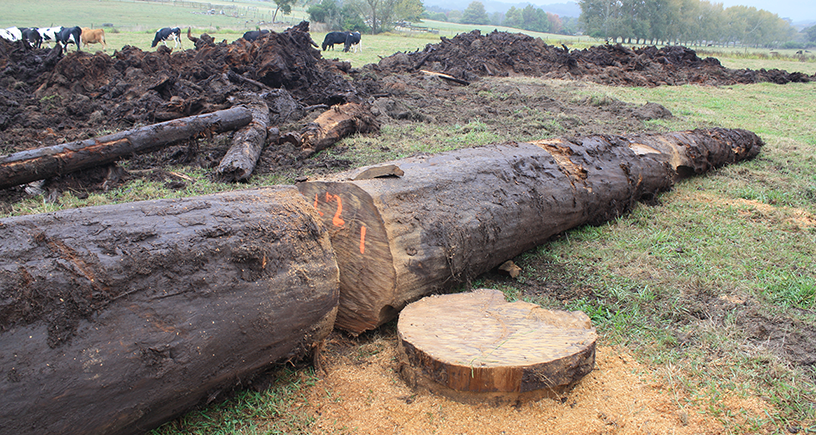Ancient trees that fell over thousands of years before present offer new insights into a dramatic phase of the Late Glacial (12,900 - 11,650 year before present). For this time period, the Kauri trees (Agathis australis) from New Zealand show important climatic and oceanic teleconnections between the northern and the southern hemisphere. An international team of scientists from New Zealand, Australia, Germany, the UK and USA just published a study in Nature Scientific Reports based on an exact year-by-year analysis of tree rings.
"A breakthrough"
This is the first time that a consecutive record of 1,451 years of tree rings from the southern hemisphere could be dendrochronologically dated and studied using radio-carbon or 14C-analysis. GFZ researcher Gerhard Helle says: “This is a breakthrough for the calibration of the radio-carbon calendars of the northern and southern hemispheres.”
The radio-carbon calendar describes the variation of 14C in the atmosphere over tens of thousands of years. It is paramount for dating samples with the radio-carbon method. But it is likewise important that scientists get an idea on how the climate developed globally and what driving forces were behind the dramatic changes, by comparing the information obtained from the Kauri trees with other trees from the northern hemisphere that grew at the same time.
According to the new study, a major cold spell, occurring 12,900 to 11,650 years ago, was driven by two distinct events. Up to now, scientists had thought that it was only one, long lasting event, most probably a spilling of glacier melt water from North America in the Atlantic Ocean. This lead to a breakdown of the Gulf Stream which in turn let temperatures drop dramatically in the northern hemisphere.
Gulf Stream shut down twice
Those climatic events of the northern hemisphere can be traced back through tree rings, lake and ocean sediments, as well as ice-cores. The prehistoric trees from New Zealand now offer new insights which in turn show that our idea of the drivers of past climatic events has to be corrected. Within the 1,000-year cold spell of the so-called Younger Dryas event during the Late Glacial the Gulf Stream was interrupted twice. In between came 500 years with an ocean circulation within the Atlantic much like the one we know today. “Remarkably this swing-back to normal did not interrupt the colder atmospheric conditions”, says Gerhard Helle from the GFZ section Climate Dynamics and Landscape Evolution. The researchers hypothesize that atmospheric teleconnections and feedback mechanisms between the two hemispheres caused the return to ice-age conditions during the Younger Dryas in the Late Glacial period.
Confirming these shut down events of the Gulf Stream with the new tree-ring data from the southern hemisphere is only possible through several steps. The Gulf Stream is part of the North Atlantic Stream which in turn is part of the thermohaline circulation spanning the globe. Warm surface water flows north into the North Atlantic surrounding Greenland, cools down and sinks to the ocean floor and flows halfway around the globe to the Antarctic Ocean. There, upwelling of the then cold water occurs, together with outgassing of ”fossil” CO2. The old carbon dioxide contains less 14C than recent atmospheric CO2 and is taken up by the trees. Radio-carbon dating such trees leads to results that make them seem older than trees grown at the same time in the northern hemisphere.
Scientific treasure turned into furniture
The study was possible because 38 of those ancient Kauri trees, sacred to the Maori people, were unearthed and analyzed. These wooden giants contain a scientific treasure but they arouse the interest of lumber companies for a different reason. The trees, some older than 40,000 years, are mined from the New Zealand soil, shipped to Singapore, and made into wooden furniture selling at very high prices.
Josef Zens, 19.05.2016
Hogg, A., Southon, J., Turney, C., Palmer, J., Ramsey, C., B., Fenwick, P., Boswijk, G., Friedrich, M., Helle, G., Hughen, K., Jones, R., Kromer, B., Noronha, A., Reynard, L., Staff, R., Wacker, L., 2016. Punctuated Shutdown of Atlantic Meridional Overturning Circulation during Greenland Stadial 1. Nature Scientific Reports 6, doi:10.1038/srep25902












![[Translate to English:] Torsten Sachs in front of a climate station on a field](/fileadmin/_processed_/3/9/csm__TorstenSachs_bearbeitet_GS_4a1365ef84.jpeg)

![[Translate to English:] left image flood at the Ahrtal: image from above, several houses are flooded; left image:: Heidi Kreibich;](/fileadmin/_processed_/4/4/csm_Bild2_9af0130e9f.png)



![[Translate to English:] Start der Vega Rakete](/fileadmin/_processed_/6/4/csm_20231201-kachel_Vega-VV23-launch_ESA-CNES-Arianespace_706716b68c.jpeg)









![[Translate to English:] Poster exhibition at the Brandenburg Hydrogen Day at the GFZ, some participants in the foreground](/fileadmin/_processed_/6/5/csm_Erster_Brandenburgischer_Wasserstofftag_GFZ_402fcec95e.jpeg)
![[Translate to English:] Group picture of the participants](/fileadmin/_processed_/9/4/csm_20231108_CAWa-Workshop-Tashkent_Gruppenbild_99ea779d8a.jpeg)

![[Translate to English:] [Translate to English:] Hörsaal](/fileadmin/_processed_/e/6/csm_H%C3%B6rsal_e21ac645fb.jpeg)


![[Translate to English:] The Delegations in the Historic Library on the Telegrafenberg. In the back there are from left to right, the Dutch Ambassador for Germany, Ronald van Roeden, the Dutch Minister for Education, Culture and Science, Robbert Dijkgraaf and the scientific director of the GFZ, Susanne Buiter.](/fileadmin/_processed_/d/b/csm_Kachel-2_9eba4b4212.jpeg)

